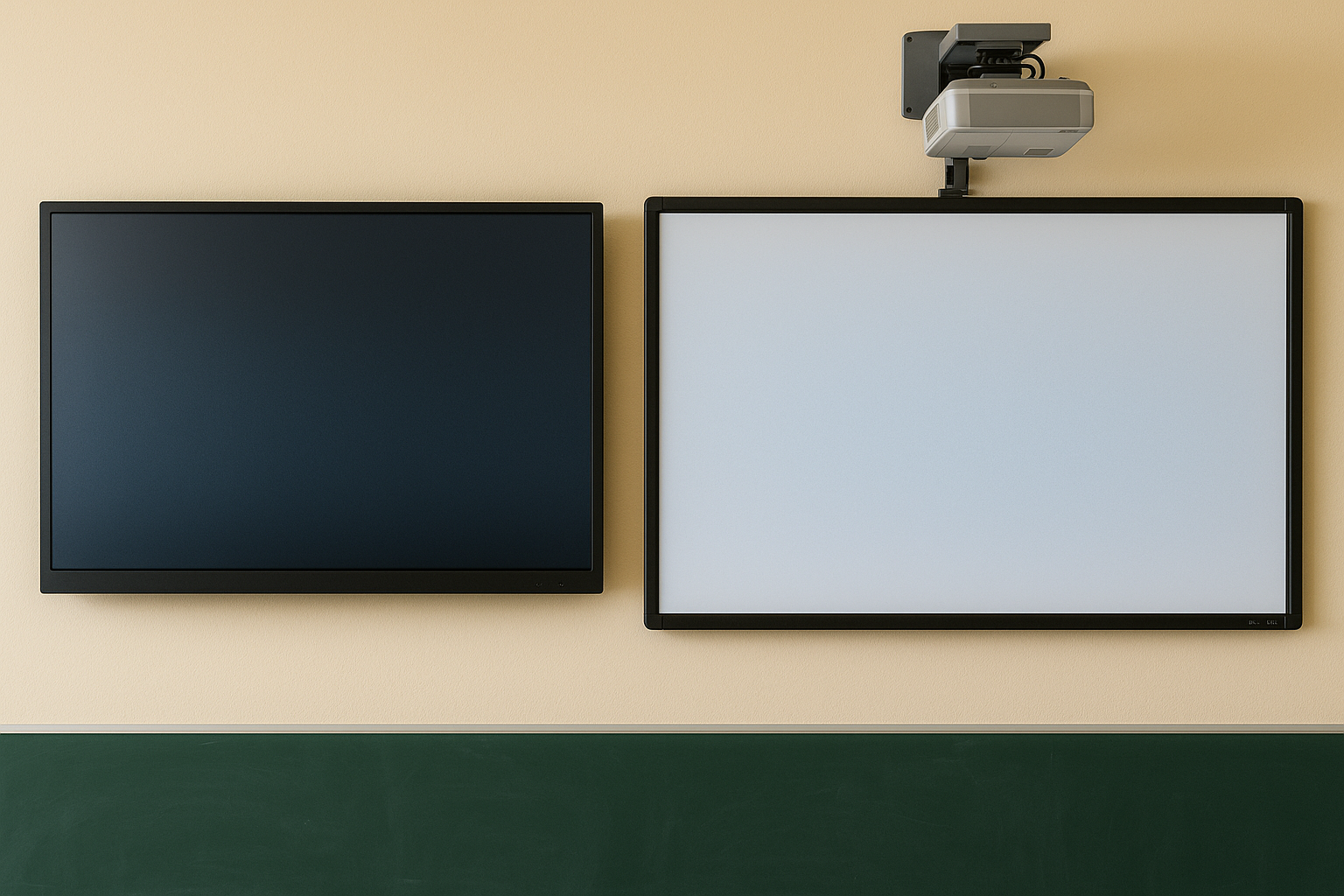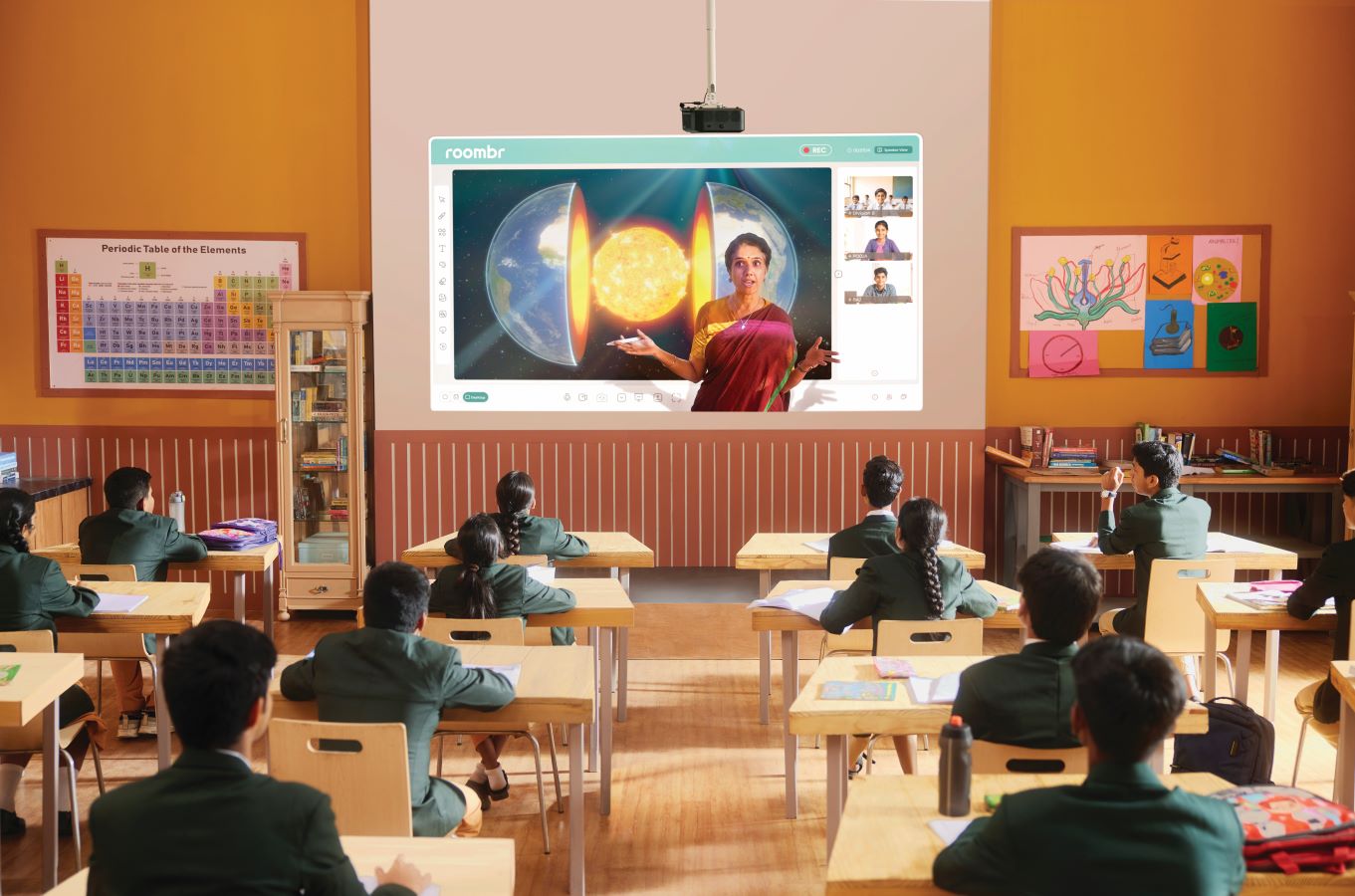Interactive Panel or Smart TV? A School’s Guide to Picking the Right Tech

In today’s classrooms, screens are everywhere. But not all screens are built for teaching.
Many schools in India are investing in smart TVs, assuming they’ll support digital teaching. Some do to an extent. But when the real goal is to engage students, simplify teaching, and make classrooms future-ready, a smart TV might not be enough.
This is where interactive panels come in. Designed specifically for education, they offer more than just content display. They’re built to support two-way interaction, annotation, recording, and collaborative learning.
So how do you decide which is right for your classroom? Let's explore and find out.
Why the Confusion Exists
Smart TVs are easily available and relatively affordable. For budget-conscious schools, they seem like a quick fix. But while they might work for watching videos or mirroring a screen, they lack the essential tools teachers use every day like writing on the board, marking diagrams, or recording lessons.
An interactive panel, on the other hand, is not just a screen. It’s a complete teaching interface.
For example, when you install a more advanced all-in-one solution such as Roombr Digital Classroom, you get more than an interactive display. It transforms a plain wall into a 120–200 inch digital canvas — one that teachers can write on, share from, record with, and interact with live. All without any extra hardware.
Smart TV vs Interactive Panel: What Really Matters
Here's a practical comparison of the two technologies for Indian classrooms:
What Smart TVs Miss in the Classroom
A screen alone doesn’t make a smart class.
Smart TVs for classrooms often force teachers to adjust their methods. They can play videos, maybe mirror a laptop. But what about the daily board work? What about asking a student to solve something on the screen? Or writing feedback during a hybrid class?
These everyday actions become a hassle when the screen isn’t made for teaching.
In fact, many teachers end up using a physical whiteboard alongside the smart TV defeating the purpose of going digital. That also creates two separate spaces in one class: one for writing, one for viewing. It breaks the flow.
Smart TVs also struggle in larger classrooms. A 55" or 65" screen simply isn’t visible from the last row, especially in higher ed settings or government schools with 50+ students in one room.
Why Schools Are Shifting to Interactive Panel Solutions

An interactive panel makes teaching feel natural again just in a smarter, faster, and more connected way.
Instead of juggling devices, teachers walk into the classroom, tap the Roombr pen, and begin teaching. They can write directly on the projected wall, annotate PDFs, open their slides, and even record the entire session.
Roombr, for example, offers:
- IR-enabled writing on any flat surface, no expensive display required
- Dual cameras that capture both teacher and board, perfect for flipped classrooms and hybrid learning
- Offline mode that works even without internet, crucial in tier-2 and tier-3 areas
- Built-in lesson recording with a single click
- Support for multiple users, students can walk up and solve problems too
It’s not just about being high-tech. It’s about being teaching-friendly.
But What About Cost?
Smart TVs may seem cheaper upfront, but that’s only part of the story.
Once you add in the cost of a whiteboard, markers, speakers, cables, and possibly a separate device to cast from, the price difference narrows quickly.
And that’s without factoring in teacher frustration, limited functionality, and the inability to scale. Schools that go with smart TVs for classrooms often find themselves upgrading again in a few years.
Interactive panel solutions, especially plug-and-play options like Roombr, lower total cost of ownership over time. They reduce training needs, setup time, and ongoing maintenance. They’re also easier to standardize across multiple classrooms.
So, Which One Is Right for Your School?
If your goal is simply to show videos or presentations, a smart TV might do the job.
But if you want:
- Active engagement
- Real-time interaction
- Annotation and whiteboarding
- Hybrid or flipped learning support
- Technology that adapts to the teacher
…then an interactive panel is the clear winner.
Built for India. Built for Learning.
Roombr isn’t just another display. It’s the world’s first patented digital classroom solution made in India, for India. It understands the infrastructure gaps, power issues, and training needs Indian schools face. That’s why it’s designed to be plug-and-teach.
Whether you're running a K–12 school, a coaching institute, or a higher education campus, Roombr’s interactive panel solution transforms your classroom into a future-ready learning space without complexity.
Book a free demo today and see how it transforms lessons, boosts engagement, and simplifies teaching.
Foziya Abuwala
Share
Step Into the future of
Education with Roombr

















